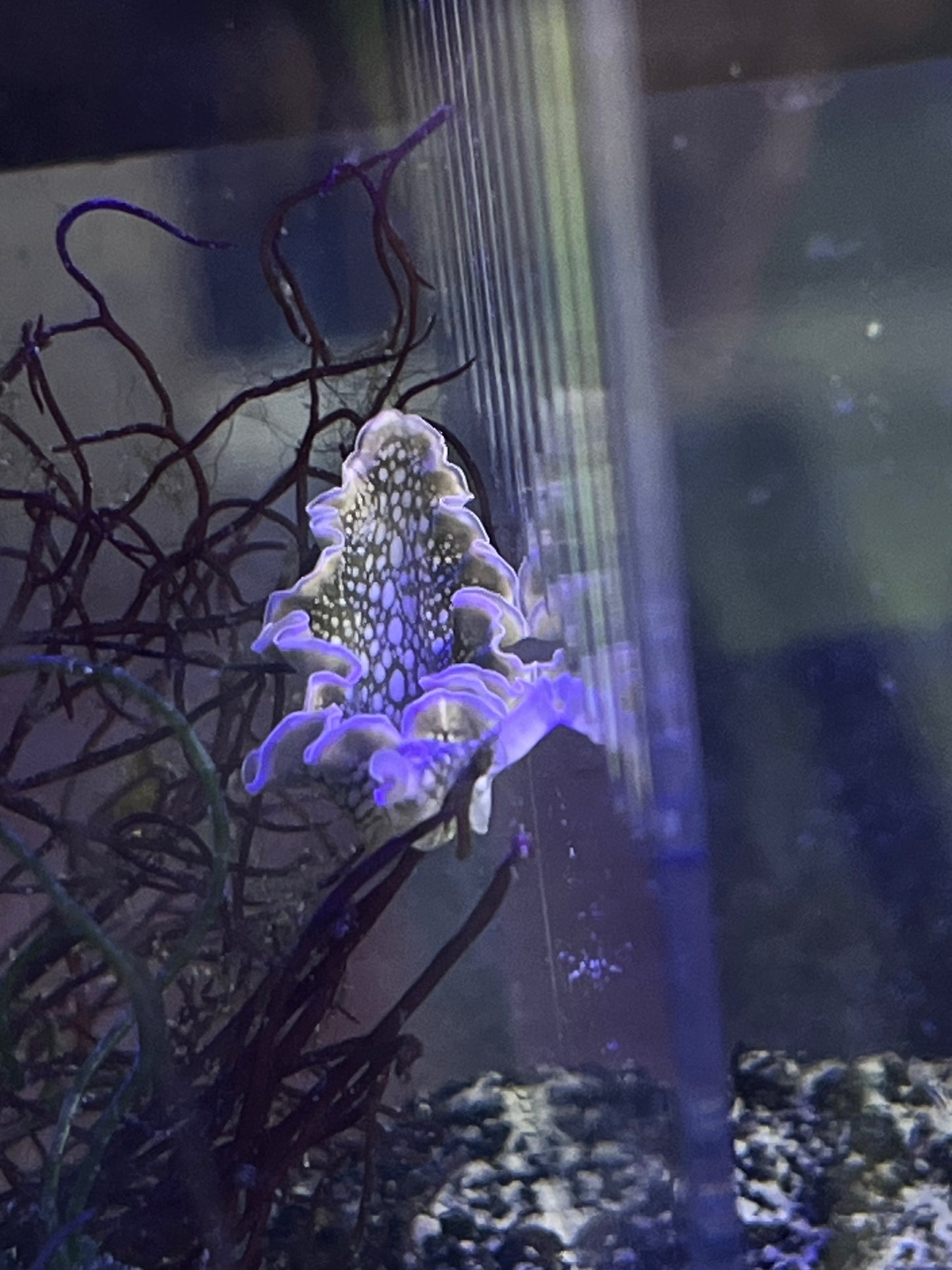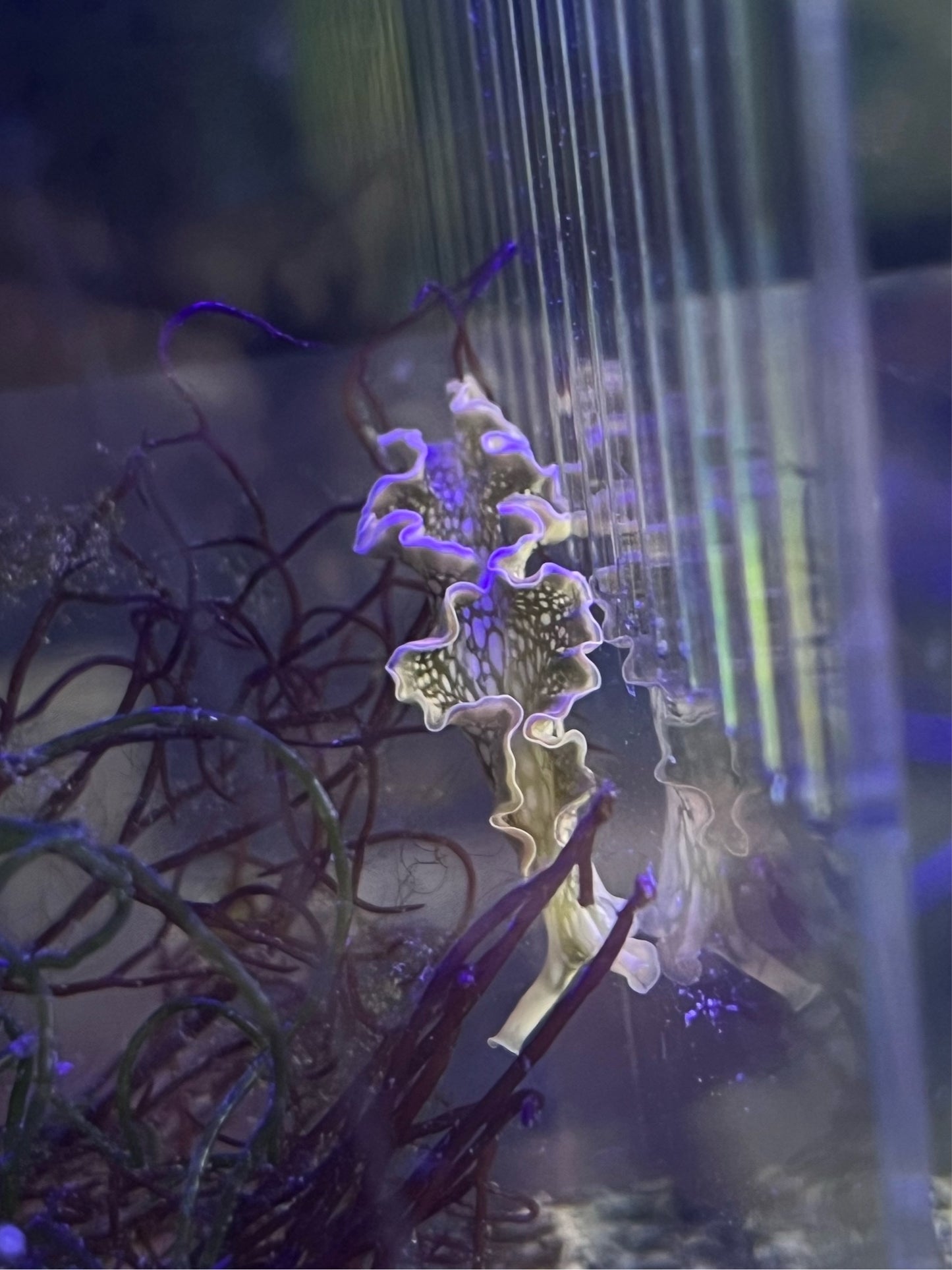YoCamron’s Aquatics
Lettuce Nudibranch
Lettuce Nudibranch
Couldn't load pickup availability
Elysia crispata, commonly known as the lettuce sea slug or the frilled sea slug, is a fascinating marine gastropod mollusk. It belongs to the family Plakobranchidae and is found in the warm tropical waters of the Caribbean Sea and the Gulf of Mexico. This species is highly unique due to its ability to photosynthesize, making it one of the few animals capable of harnessing energy from sunlight.
The appearance of Elysia crispata is striking and beautiful. It has a slender body that can grow up to 7 centimeters in length. The body is translucent, allowing the internal organs to be visible. The most distinctive feature of this sea slug is the frilly, leaf-like structures that extend from its back, resembling lettuce leaves. These frills are actually extensions of the digestive system, which contain chloroplasts stolen from the algae it feeds on. The chloroplasts enable the slug to perform photosynthesis, providing it with a supplementary source of energy.
Caring for Elysia crispata requires some specific considerations to ensure their well-being:
1. Tank setup: Provide a well-maintained saltwater aquarium with a capacity of at least 20 gallons. The tank should have a sandy substrate and plenty of live rock or artificial structures for the slugs to climb on.
2. Water parameters: Maintain a stable water temperature between 75-80°F (24-27°C) and a salinity level of 1.023-1.025. Regular water testing is essential to monitor ammonia, nitrite, and nitrate levels, which should be kept at zero.
3. Lighting: Elysia crispata requires moderate to high-intensity lighting to support their photosynthetic abilities. Use full-spectrum LED lights or T5 fluorescent bulbs to provide the necessary light spectrum.
4. Feeding: While Elysia crispata can photosynthesize, they still require supplemental feeding. Offer them a variety of macroalgae, such as Ulva, Caulerpa, or Halimeda. It is crucial to ensure the algae is free from any pesticides or contaminants.
5. Algae cultivation: To provide a constant supply of fresh algae, consider setting up a separate refugium or algae culture tank. This will allow you to grow different types of algae and harvest them as needed.
6. Water quality: Regular water changes of 10-20% every two weeks are necessary to maintain good water quality. Use a high-quality protein skimmer to remove organic waste and maintain proper oxygen levels.
7. Compatibility: Elysia crispata is generally peaceful and can be kept with other non-aggressive marine species. However, avoid housing them with aggressive or predatory fish that may harm or eat them.
8. Observation: Take time to observe and appreciate the behavior of Elysia crispata. They are known to be active during the day, moving slowly and gracefully across the tank. You may even witness them extending their frills to maximize their photosynthetic capabilities.
In conclusion, Elysia crispata is a captivating sea slug that offers a unique opportunity to witness photosynthesis in action. By providing the right environment, lighting, and diet, you can successfully care for these fascinating creatures and enjoy their beauty in your own aquarium.
Share




